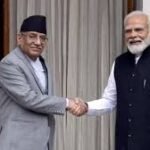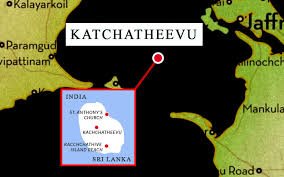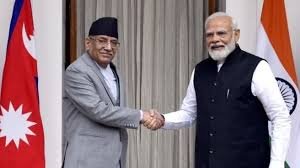Sir Ludwig Guttmann: The Visionary Behind the Paralympic Movement
Early Life and Medical Career
Born on July 3, 1899, in Tost, Germany (now Toszek, Poland), Sir Ludwig Guttmann was a German-born British neurologist who played a pivotal role in the establishment of the Paralympic Games. He earned his medical degree from the University of Freiburg in 1924 and quickly became a leading neurosurgeon. However, with the rise of the Nazi regime and the implementation of the Nuremberg Laws in 1933, Guttmann, being Jewish, faced severe restrictions on his medical practice. By 1937, he was working at the Jewish Hospital in Breslau (now Wrocław, Poland). During the Kristallnacht pogrom in November 1938, Guttmann admitted numerous Jews seeking medical care, an act that drew the ire of the SS and Gestapo. In 1939, he fled Nazi Germany and found refuge in England, where he continued his medical career.
Founding the Stoke Mandeville Games
In 1944, Guttmann was appointed as the director of the National Spinal Injuries Centre at Stoke Mandeville Hospital in Aylesbury, England. Recognizing the therapeutic potential of sports for individuals with spinal cord injuries, he organized the first competition for wheelchair athletes on July 29, 1948, coinciding with the opening ceremony of the London Olympic Games. This event, known as the Stoke Mandeville Games, featured 16 injured servicemen and women competing in archery. The success of this event marked a significant milestone in the history of sports for people with disabilities.
Evolution into the Paralympic Games
The Stoke Mandeville Games gained international attention, and by 1952, athletes from the Netherlands joined the competition, marking its first international participation. The event continued to grow, and in 1960, the ninth Stoke Mandeville Games were held in Rome, Italy, coinciding with the Olympic Games. This event is now recognized as the first official Paralympic Games, featuring 400 athletes from 23 countries. Guttmann’s vision had transformed a small rehabilitation event into a global movement, providing a platform for athletes with disabilities to showcase their talents on an international stage.
Legacy and Impact
Sir Ludwig Guttmann’s pioneering efforts have left an indelible mark on the world of sports and rehabilitation. His belief in the power of sports as a tool for healing and integration has led to the Paralympic Games becoming one of the largest international sporting events, promoting inclusivity and challenging societal perceptions of disability. Guttmann’s legacy continues to inspire and empower athletes worldwide, embodying the spirit of resilience and determination.

Why This News Is Important
Highlighting the Origins of the Paralympic Movement
Understanding the roots of the Paralympic Games offers valuable insights into how sports can serve as a catalyst for social change and rehabilitation. Sir Ludwig Guttmann’s innovative approach in the mid-20th century laid the groundwork for a global movement that emphasizes the abilities and achievements of athletes with disabilities. This historical perspective is crucial for appreciating the evolution of inclusive sports and the ongoing efforts to promote equality in athletic arenas.
Inspiration for Aspiring Public Servants
For students preparing for government exams, especially those aiming for roles in public service, education, and social welfare, Guttmann’s story exemplifies how visionary leadership and dedication can lead to transformative societal impacts. His work underscores the importance of inclusivity, empathy, and innovation in public policy and community initiatives. Learning about such figures can inspire future public servants to advocate for and implement programs that support marginalized communities, including individuals with disabilities.
Historical Context
The Post-World War II Era and Rehabilitation
After World War II, there was a significant number of injured servicemen and women, particularly those with spinal cord injuries. During this period, medical professionals began exploring new rehabilitation methods to improve the quality of life for these individuals. Sir Ludwig Guttmann was at the forefront of this movement, introducing sports as a means of physical therapy and social reintegration. His establishment of the Stoke Mandeville Games in 1948 was a revolutionary step, challenging traditional perceptions of disability and showcasing the potential of adaptive sports.
Key Takeaways from Sir Ludwig Guttmann’s Legacy
| S.No. | Key Takeaway |
|---|---|
| 1 | Pioneering Rehabilitation: Introduced sports as a therapeutic tool for individuals with spinal cord injuries. |
| 2 | Founding the Paralympics: Organized the first Stoke Mandeville Games in 1948, leading to the inaugural Paralympic Games in 1960. |
| 3 | Global Movement Initiator: Transformed a local rehabilitation event into an international sporting movement for athletes with disabilities. |
| 4 | Advocate for Inclusivity: Championed the integration of disabled individuals into mainstream sports and society. |
| 5 | Enduring Legacy: His vision continues to inspire and empower athletes with disabilities worldwide. |
Important FAQs for Students from this News
Q1: Who was Sir Ludwig Guttmann?
A1: Sir Ludwig Guttmann was a German-born British neurologist who founded the Paralympic Games. He introduced sports as a form of rehabilitation for individuals with spinal cord injuries and organized the first Stoke Mandeville Games in 1948.
Q2: What were the Stoke Mandeville Games?
A2: The Stoke Mandeville Games, initiated by Guttmann in 1948, were the precursor to the Paralympic Games. They began as a competition for wheelchair athletes and evolved into an international event promoting sports for individuals with disabilities.
Q3: When and where were the first official Paralympic Games held?
A3: The first official Paralympic Games were held in Rome, Italy, in 1960, featuring 400
Q4: Why is Sir Ludwig Guttmann called the ‘Father of the Paralympic Movement’?
A4: He is called the ‘Father of the Paralympic Movement’ because he pioneered the use of sports as rehabilitation for people with spinal cord injuries and initiated the Stoke Mandeville Games, which later evolved into the Paralympic Games.
Q5: How did the Paralympic Games evolve over time?
A5: The Paralympic Games started as a small competition for wheelchair athletes in 1948 and expanded internationally in 1952. The first official Paralympics took place in 1960 in Rome, and since then, the event has grown into one of the largest sporting events in the world, featuring thousands of athletes across multiple disciplines.
Some Important Current Affairs Links


















 Exciting News!
Exciting News!  Join Our Telegram Channel Now!
Join Our Telegram Channel Now!
 Join our Telegram channel for a thrilling adventure into the world of daily current affairs.
Join our Telegram channel for a thrilling adventure into the world of daily current affairs. 
 Don’t miss out on the latest updates and insights! Click to join now and be part of the knowledge revolution!
Don’t miss out on the latest updates and insights! Click to join now and be part of the knowledge revolution! 
